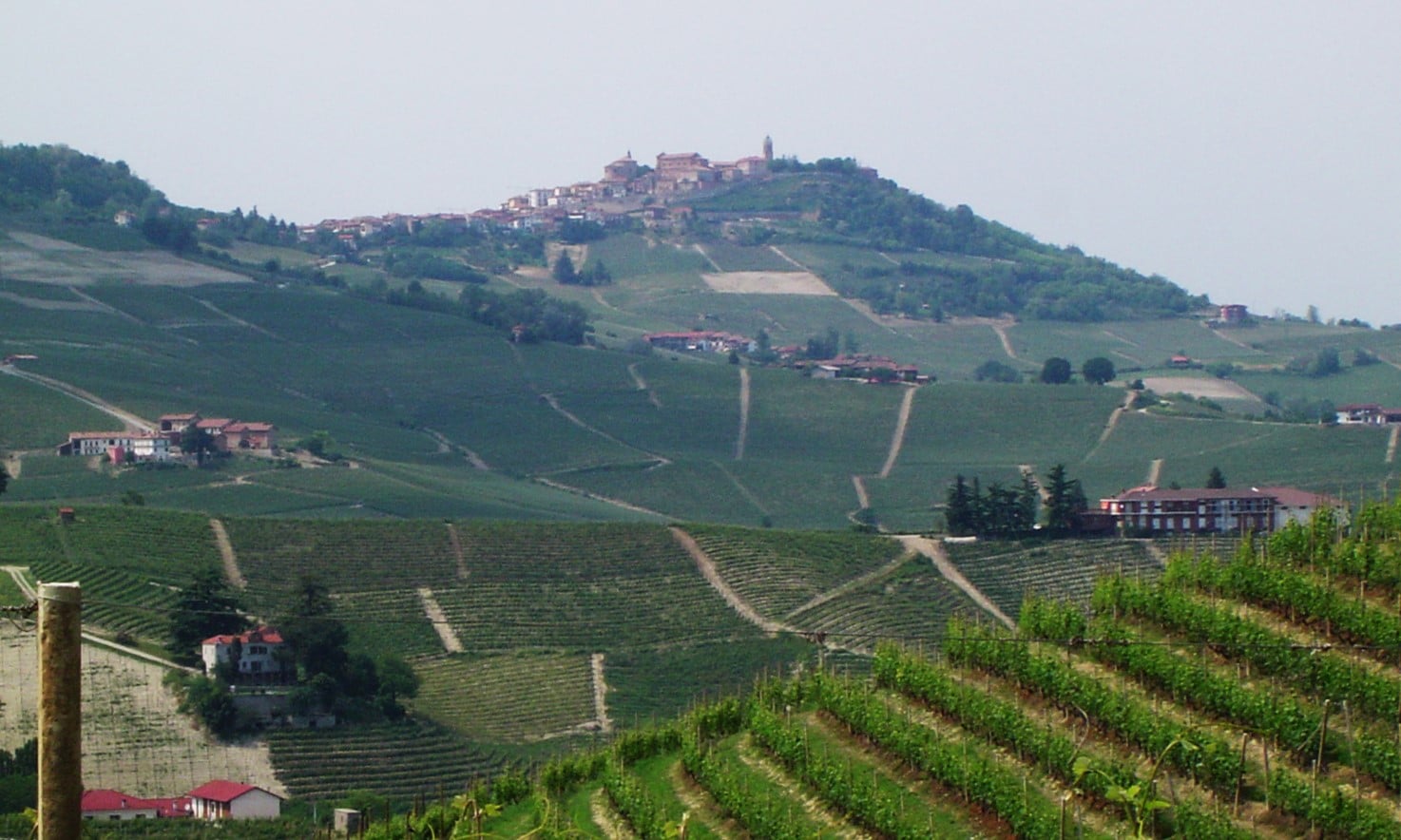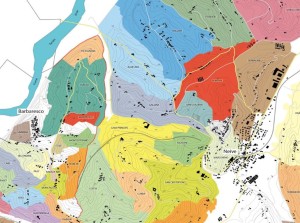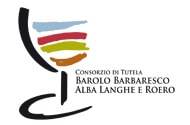Search
Menu
 Barbaresco, Piedmont
Barbaresco, PiedmontBarolo’s counterpart is Barbaresco, with Nebbiolos of equal quality but a different style. Barbaresco wines are similar in many ways to those of Barolo, but less tannic and softer; some say more elegant and “fresher.” Barbaresco sells for less than Barolo and often represents good value by comparison.
The Barbaresco DOCG is located near Barolo, just on the other side of Alba.  As noted earlier, the denomination is about a third the size of Barolo. It contains just three communes: Barbaresco, Neive, and Treiso. As in Barolo, vineyard areas within the denomination have been designated as menzioni geografiche aggiuntive or MeGAs. Being smaller, Barbaresco has only 66 MeGAs designated (see map at right or official map at the consorzio website).
As noted earlier, the denomination is about a third the size of Barolo. It contains just three communes: Barbaresco, Neive, and Treiso. As in Barolo, vineyard areas within the denomination have been designated as menzioni geografiche aggiuntive or MeGAs. Being smaller, Barbaresco has only 66 MeGAs designated (see map at right or official map at the consorzio website).
Like Barolo, Barbaresco was one of the first wine areas to receive DOC status in 1966 and became a DOCG in 1980. There are 728 hectares (1,798 acres) of vineyard area. The Barbaresco DOCG has an annual production of approximately 30,000 hectoliters (335,000 cases).
 Again, there are just two styles of Barbaresco DOCG wine: Barbaresco and Barbaresco Riserva. All Barbarescos are 100% Nebbiolo, like Barolo, although here the minimum alcohol level is 12.5%, compared to 13% in Barolo. Barbaresco tends to be ready to drink earlier than Barolo and requires less aging prior to release. Standard Barbaresco must age for two years, including at least 9 months of wood aging. The riserva designation for Barbaresco’s best wines requires two additional years of aging.
Again, there are just two styles of Barbaresco DOCG wine: Barbaresco and Barbaresco Riserva. All Barbarescos are 100% Nebbiolo, like Barolo, although here the minimum alcohol level is 12.5%, compared to 13% in Barolo. Barbaresco tends to be ready to drink earlier than Barolo and requires less aging prior to release. Standard Barbaresco must age for two years, including at least 9 months of wood aging. The riserva designation for Barbaresco’s best wines requires two additional years of aging.
We now move from Piedmont to Tuscany, where Sangiovese is king.
Next topic: Chianti Classico Gran Selezione